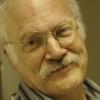Harsh 'City of Life and Death' pulls no punches depicting Nanking atrocity
The Chinese were the Asian equivalent to Japan of European Jews to the Nazis: an inferior race to be freely and justifiably exterminated at will. If any doubt remains that the Japanese were every bit as monstrous as the Germans in World War II, the film at hand should lay it permanently to rest.
"City of Life and Death" is a devastating quasi-documentary epic about the events of December 1937, when Japan's Imperial Army conquered the short-lived Chinese capital of Nanking -- slaughtering 300,000 soldiers and civilians in the process.
It is as hellishly hard to describe this picture as to get one's mind around the mega-crimes it depicts. You know from the outset that the Chinese of Nanking are in a grim situation, indeed, when the closest thing to their hero or protector is himself a Nazi.
That would be John Rabe (John Paisley), German businessman and Hitler loyalist, who chose to remain as the last Nazi representative in Nanking and establish the only international "Safety Zone" to protect the occupied city's 200,000 civilian refugees after the Japanese victory.
But unlike "Schindler's List" (or the 2009 biopic devoted to him, "John Rabe," with Steve Buscemi), Chinese director Lu Chuan's wrenching account takes the perspective of the (hitherto faceless) victims and oppressors, rather than the rare micro-hero among them. The primary human focus is Kadokawa (Hideo Nakaizumi), neither a victim nor oppressor nor hero -- just a homesick Japanese soldier.
The actual appalling circumstances were these: Having lost the Battle of Shanghai in 1937, Chinese leader Chiang Kai-shek knew the fall of Nanking was just a matter of time. To preserve his elite troops, rather than risk their annihilation in hopeless defense of the capital, he withdrew deep into China's interior to fight a war of attrition against the Japanese in the hinterlands, leaving 100,000 largely untrained troops behind to defend Nanking "to the last man" and to prevent civilian evacuation by blocking all roads. The civilians' fate in the "Safety Zone" -- packed, like the Warsaw Ghetto, with Nanking's entire remaining population -- was left to Rabe and his few brave assistants.
The director's amazing battle scenes illustrate that the Japanese goal was not the conquest but the obliteration of Nanking, whose hopelessly outnumbered Kuomintang defenders were crushed in three quick horrible days. The Japanese troops' incentive? They were told they could loot and rampage at will, while imperial kinsman Prince Asaka (the presiding authority) issued an order to kill all prisoners.
The "Rape of Nanking" was a literal as well as figurative atrocity. In this depiction, the systematic mass rape and execution scenes are nearly unwatchable -- a slaughterhouse that dwarfs "No. 5" in Dresden, an Asian complement to the Holocaust. On the single morning of Dec. 18, 1937, more than 57,000 tethered Chinese POWs were mowed down by machine guns, their bodies dumped into the Yangtze River.
The actors are top-notch. Mr. Nakaizumi as Kadokawa, with his incredibly soulful, frightened eyes, is haunting. Young Bin Lius as the little child soldier extraordinaire -- of this and all wars -- is extraordinary. So is Cao Yu's stark black-and-white cinematography and framing of the post-apocalyptic destruction, and the choreographed editing of this chaos into a kind of Balanchine-like geometric nightmare: Japanese soldiers march in neat diagonal lines through the death, rubble and ruin they've created.
"City of Life and Death" is emotionally devastating, punishing to watch and the pace is excruciatingly slow. One wonders how long we'll have to suffer? (Answer: 133 minutes.) What's the use of documenting this nightmare so painfully and mercilessly, and who really wants to see it?
Nobody.
But we, and especially our children, should.






